- Solan Sync
- Posts
- Build an AI Agent That Works While You Sleep: A Real-World Guide
Build an AI Agent That Works While You Sleep: A Real-World Guide
Discover how anyone can build a practical AI agent that works around the clock—no PhD required. Learn the key components, step-by-step workflow, and actionable tips to automate real business tasks using Relevance AI.
Build an AI Agent That Works While You Sleep: A Real-World Guide
AI agents aren’t the future—they’re already changing how we work today. Here’s how you can build your own, even if you’re not an AI expert.
Why AI Agents Matter in 2025
AI agents are rapidly moving beyond simple chatbots. Today’s agents can:
Understand context and remember past interactions
Use external tools and APIs
Take real action, not just respond to questions
Platforms like Relevance AI have removed the barriers—now anyone can design agents to automate business tasks in hours, not months.
From Chatbots to Intelligent Agents: How We Got Here
AI agents have come a long way, from ELIZA in the 1960s to Siri and Alexa, and now to large language models like GPT-4. The game-changer?
Combining reasoning (LLMs), memory, tools, and knowledge—all orchestrated in easy-to-use platforms.
The 5 Essential Ingredients of an AI Agent
Brain (LLM):
The engine—GPT-4, Claude, LLaMA, etc.—that does the reasoning and language understanding.Prompt:
Clear instructions or “job description” for your agent.Memory:
Stores context and history across interactions.Knowledge:
Access to internal docs, spreadsheets, or scraped data.Tools:
APIs, scrapers, schedulers—anything that helps your agent act in the real world.
Building a Sales Co-Pilot: Step-by-Step Example
Let’s see a real-world use case: a Sales Co-Pilot Agent for meeting prep.
Input:
Company website and LinkedIn URL.What the Agent Does:
Scrapes company info and summarizes it.
Extracts and summarizes the prospect’s profile.
Generates talking points, objections, and icebreakers for meetings.
How It’s Triggered:
Sales reps simply drop a link or add a calendar invite. The agent does the rest, automatically.
Other Real-World Use Cases
AI agents built on platforms like Relevance AI can automate:
Customer support responses (using knowledge from past tickets)
Resume screening and email drafting in recruitment
Spreadsheet analysis in finance
Project management updates via Notion or Slack
If your task is repeatable, there’s a good chance an agent can handle it.
Lessons Learned (So You Don’t Have to Struggle)
Start small. Focus on one clear task and one output at first.
Keep prompts simple and specific. Over-complication leads to confusion.
Upload relevant knowledge. Agents are only as smart as the data they can access.
Test before launch. Dry runs catch issues before real users see them.
Assign a clear role. Give your agent a job title and purpose.
Think like a user. The best agents solve real pain points, not just technical challenges.
No-code is fine! Platforms like Relevance AI let you build powerful agents visually—coding skills optional.
How to Build an AI Agent in Relevance AI (Step-by-Step Guide)
Want to automate your daily tasks? Here’s how you can build a no-code AI agent in Relevance AI, using their visual builder. This walkthrough uses the actual onboarding flow—perfect for beginners or anyone curious about AI agents!
1. Start Your Agent Project
Begin by starting a new agent project. This is your workspace for creating, customizing, and testing your AI agent.
2. Describe What Your Agent Should Do
Write a simple description of the agent’s job. Example:
“Create an agent to analyze tweets, user profiles, or hashtags from X (Twitter).”
Be specific, like you’re explaining the task to a new team member.
3. Choose the Data You Want to Analyze
Decide which data your agent should work with.
You can pick from tweets, user profiles, hashtags, or any other available data source.
Paste the target URL or describe your source.
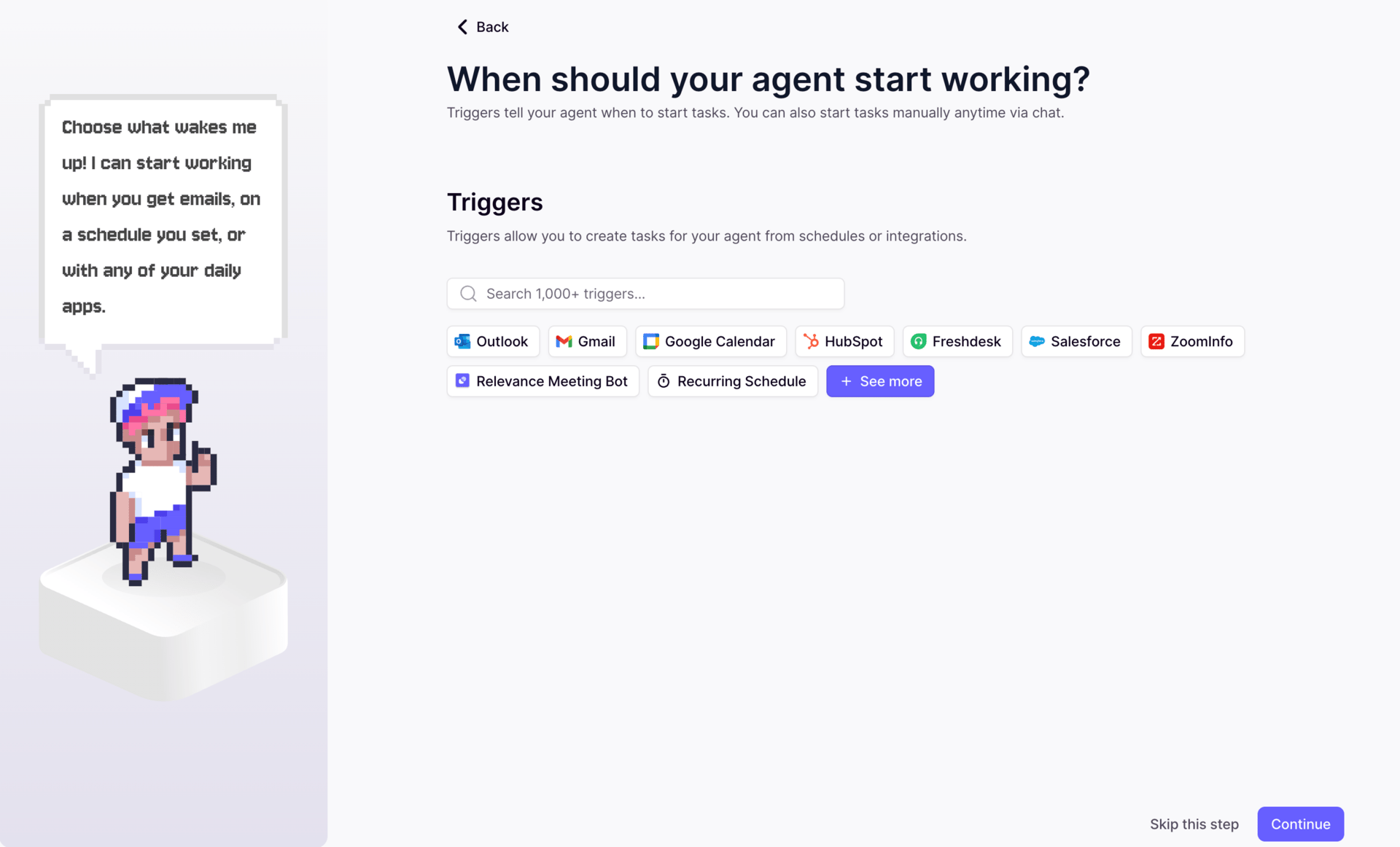
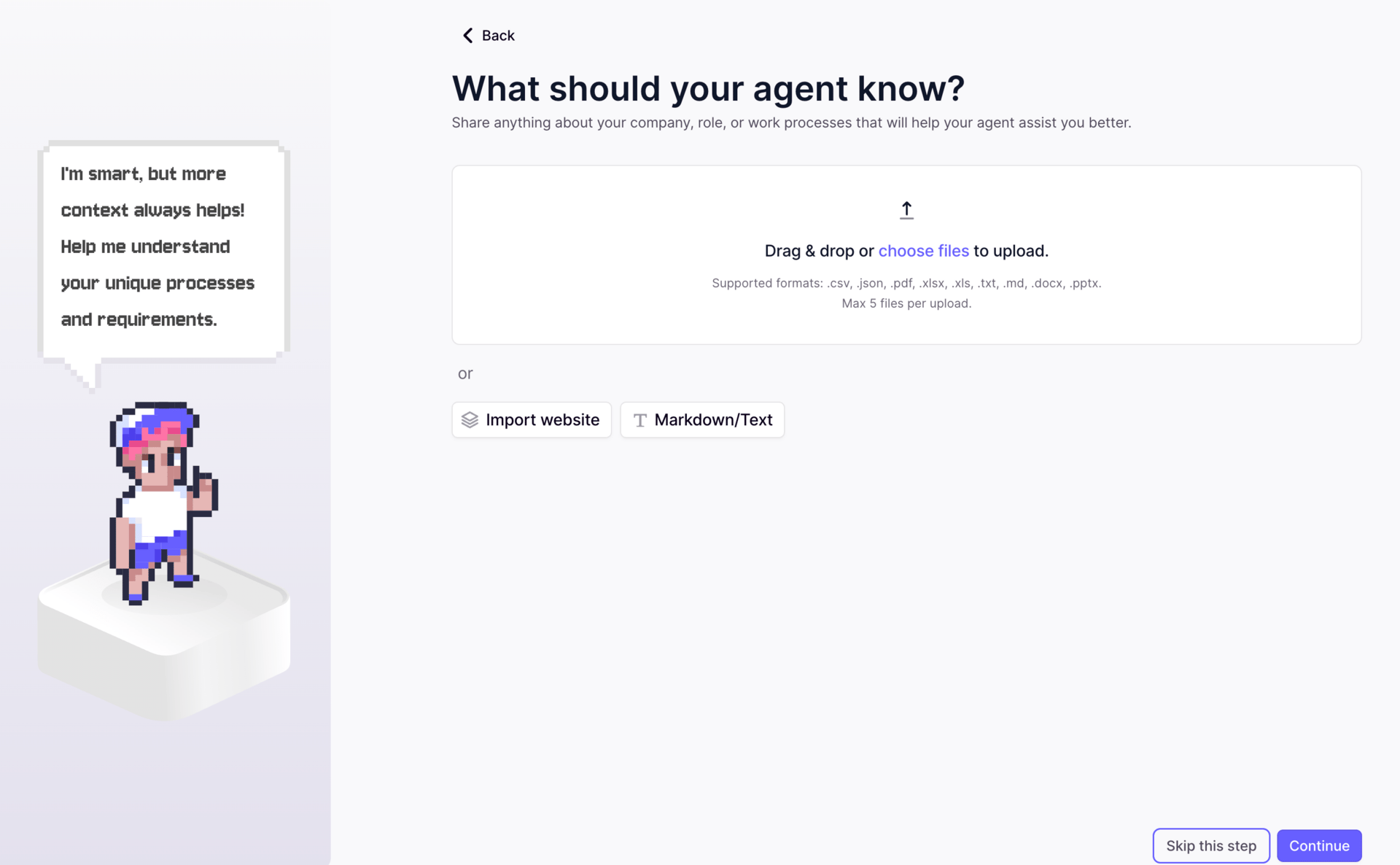
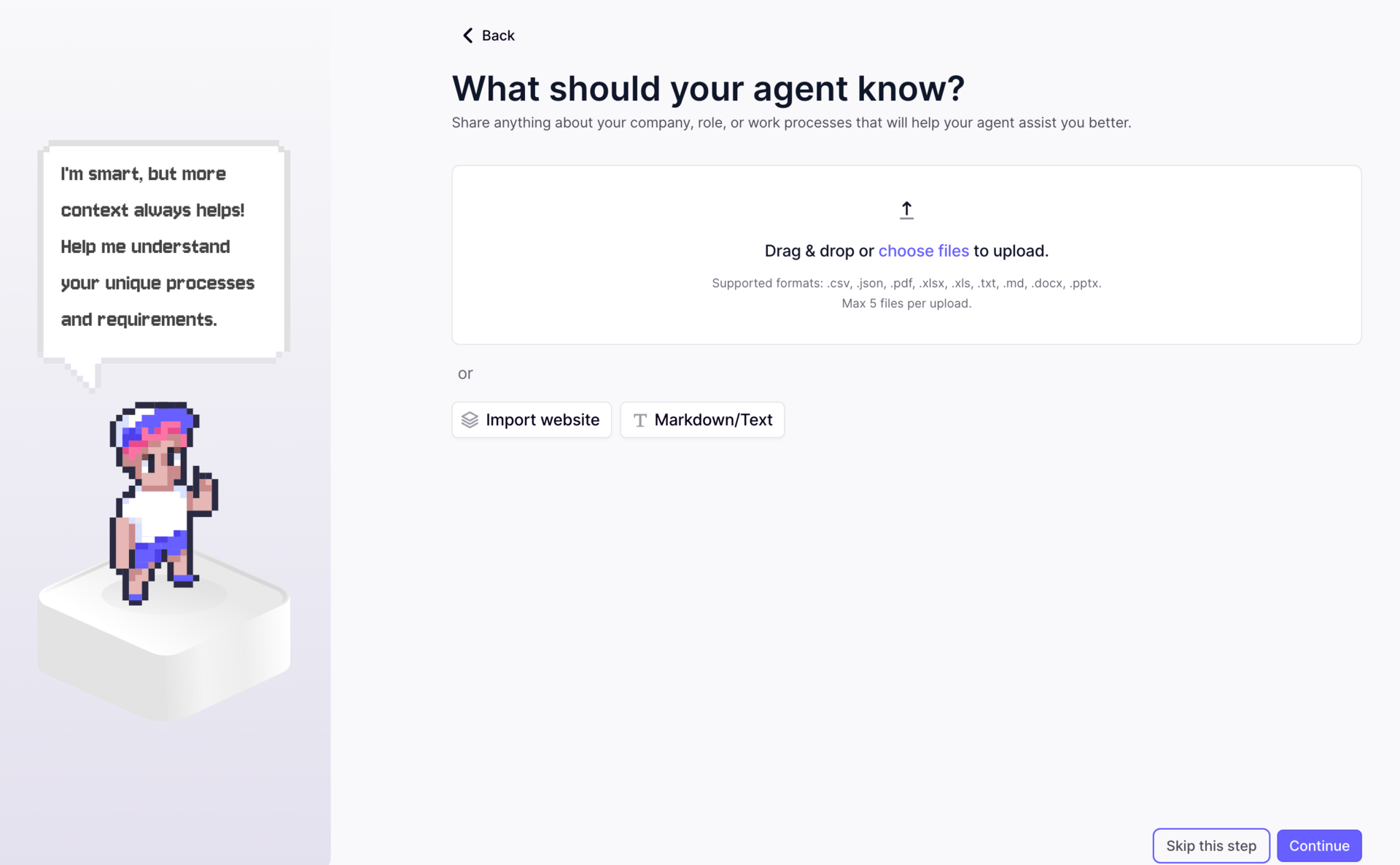
4. Select the Right Tools
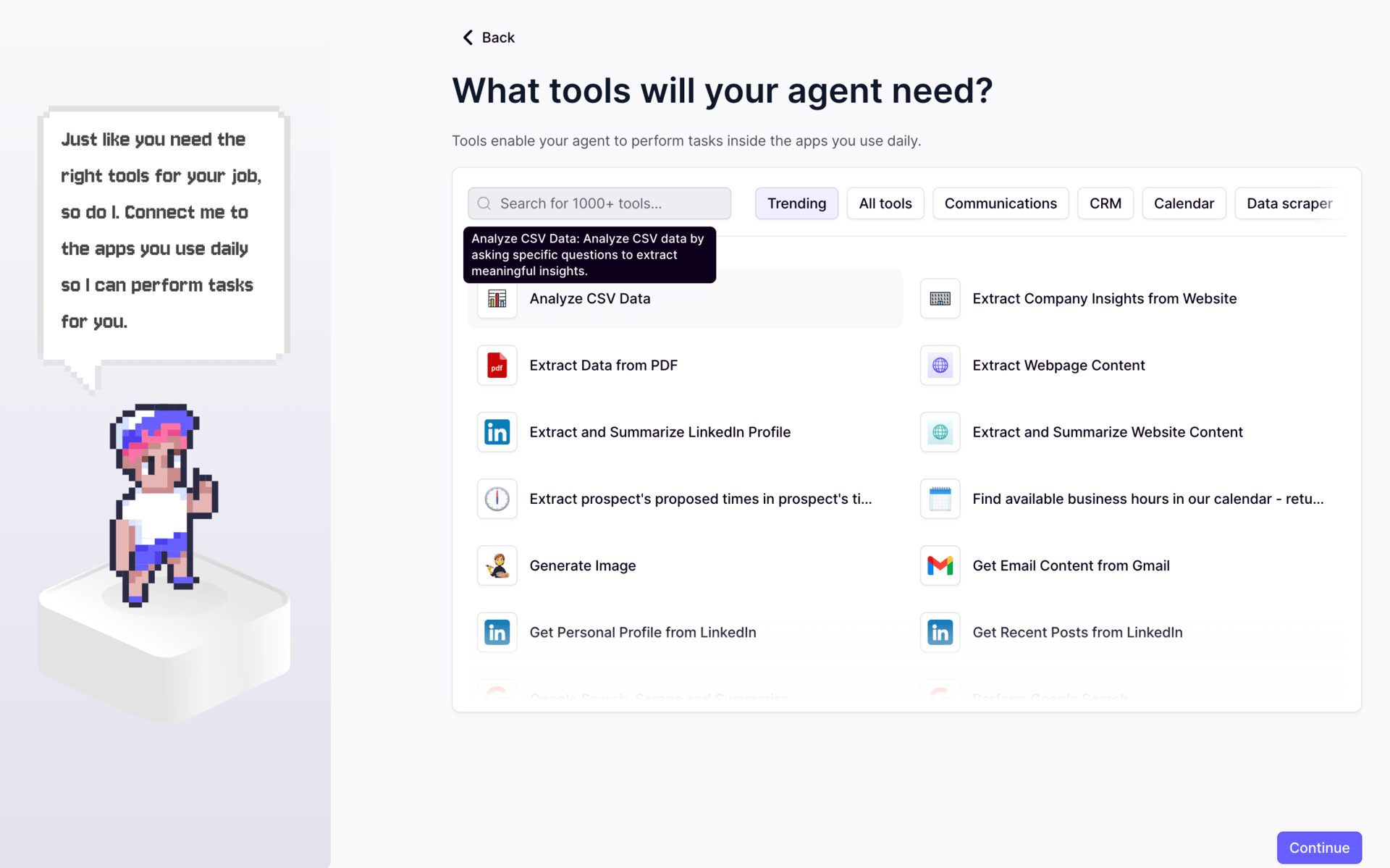
Agents need tools to take action.
Choose from built-in tools like:
Analyze CSV data
Extract data from PDFs or LinkedIn
Summarize website content
Get recent posts, generate images, and more
Pick the tools that match your workflow!
5. Upload Knowledge or Context
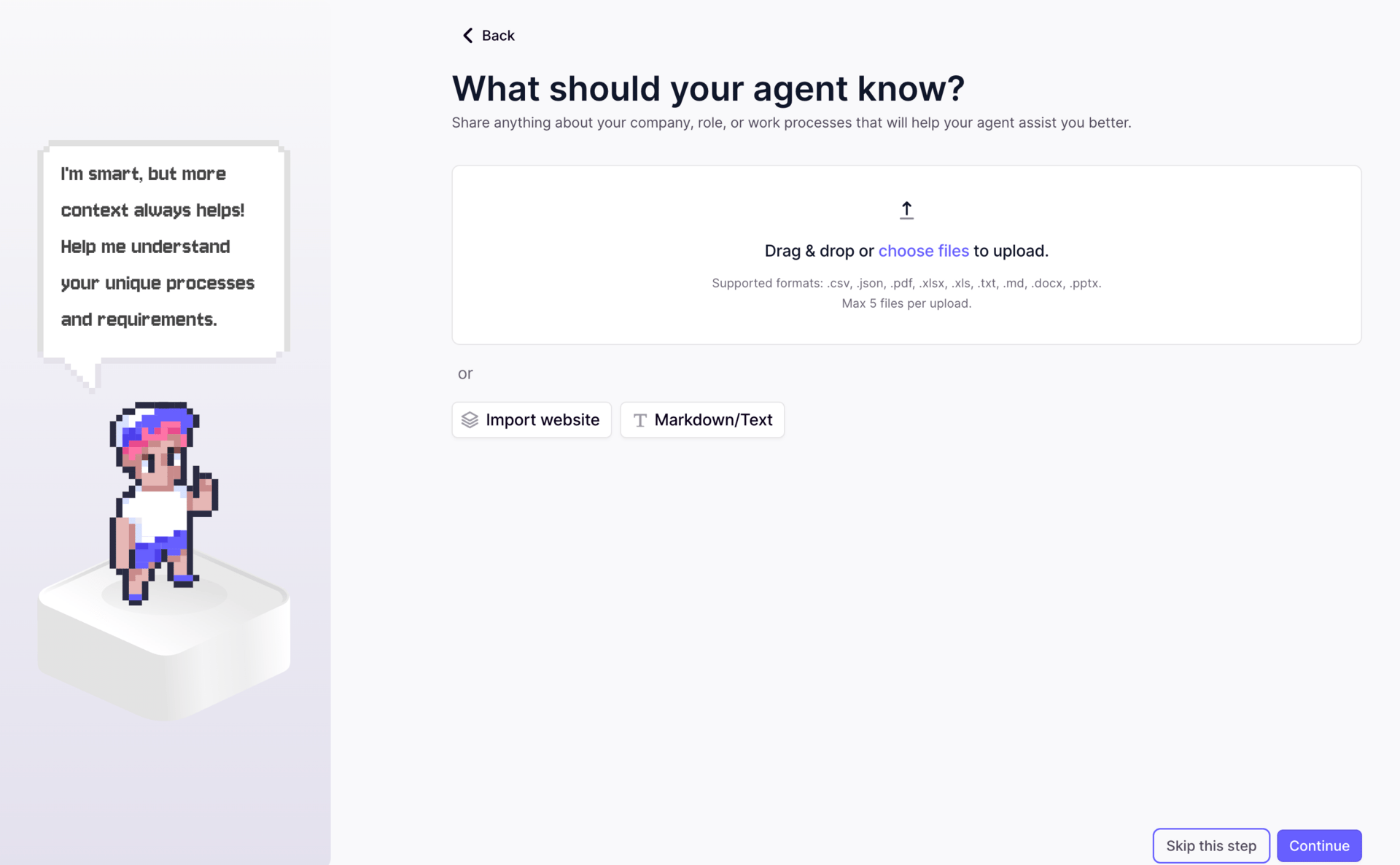
You can upload files (CSV, PDF, Excel, etc.), import a website, or paste markdown/text.
This helps your agent understand your processes and gives it the context it needs to give smarter answers.
6. Set Up Triggers
Triggers decide when your agent gets to work:
When you get emails
On a schedule you set
When a new meeting is added
Or via integrations with Google Calendar, Outlook, Salesforce, etc.
Pick the event that fits your workflow best.
7. Define Your Output
Tell your agent what you want as a result:
Analyze data
Generate leads
Write content
Send messages
…and more!
8. Choose Your Skill Level
Let Relevance AI know how technical you are:
Not technical
Tech savvy
Advanced
This helps personalize your agent-building experience.
9. Set Your Goal
Choose what you want to accomplish:
Build and customize your own AI agents
Use pre-built agents to improve workflows
Just explore what’s possible
That’s It!
You’re ready to hit Build and Run your new AI agent.
No coding required—just a few clicks and a bit of imagination.
Getting Started: Your First AI Agent
Pick one boring, repeatable task in your daily workflow.
Map the input to the desired output (e.g., “Get meeting prep from LinkedIn and company URL”).
Log in to Relevance AI (or a similar platform).
Give your agent a brain (choose your LLM), add your prompt, upload knowledge, and connect tools.
Test and iterate. Don’t aim for perfection on day one.
Conclusion: You’re Closer Than You Think
You don’t need a PhD or years of experience to build your own AI agent. The real secret is just getting started.
If you’ve ever thought, “There must be a better way to do this repetitive task”—you’re right. The tools are here, and the AI wave is just starting to crest. Catch it.
Ready to try?
Map one of your own pain points, and start building your first agent. Have questions or want step-by-step support? Drop a comment or DM—let’s build something powerful together.

Reply